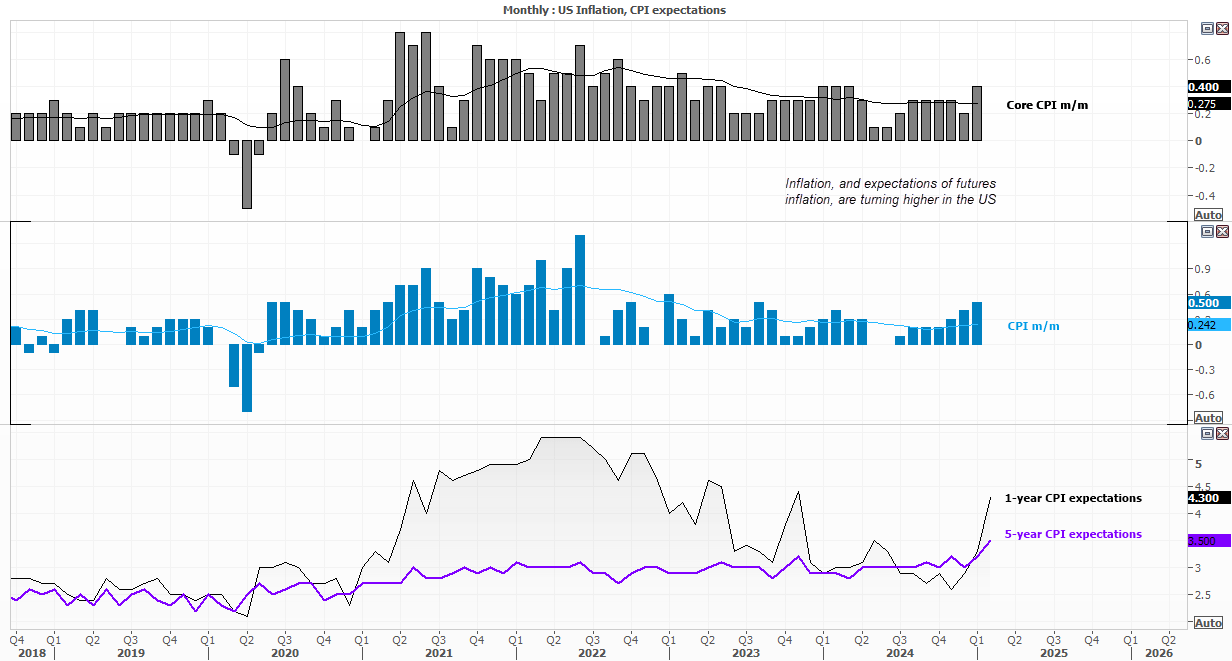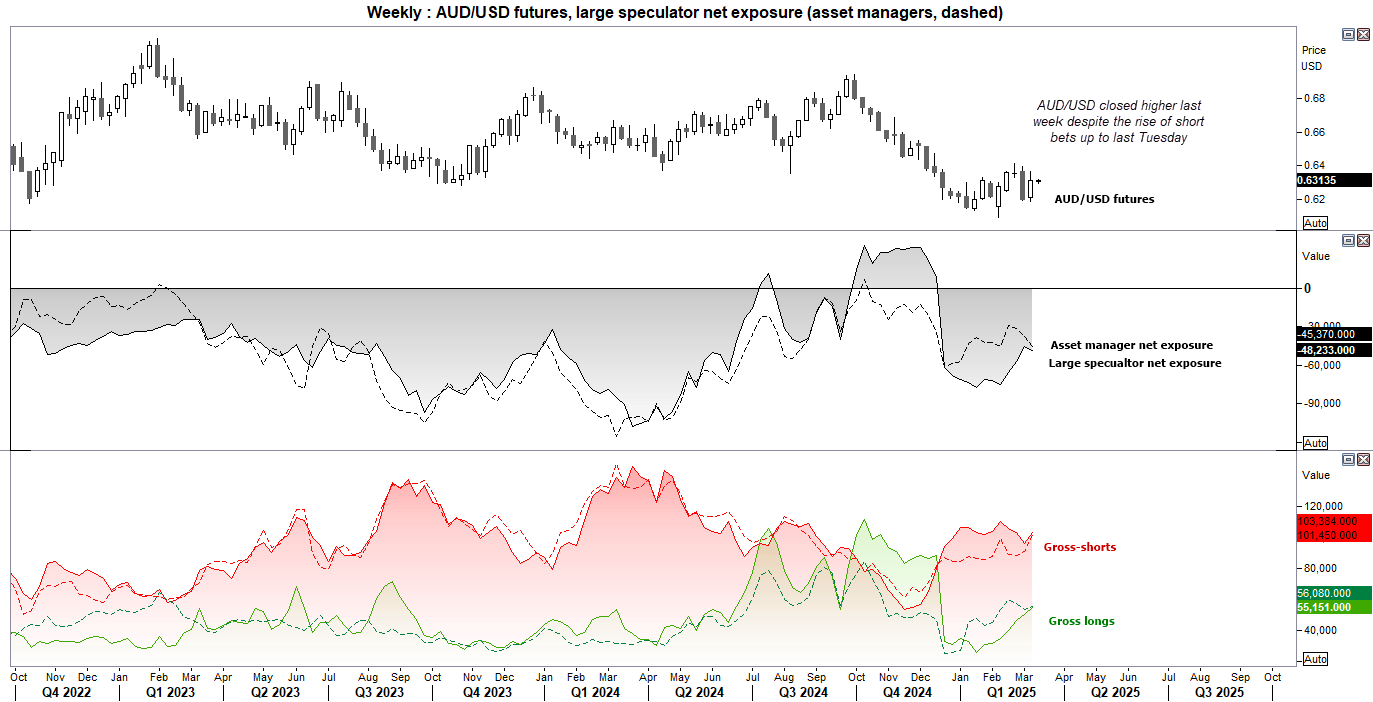
February’s inflation figures for the US is the main calendar event. But traders will also pay greater attention to smaller economic reports given the growing evidence that the US economy is slowing. Friday saw nonfarm payrolls change add 150k jobs, just short of the 160k expected. PMI reports have also come in surprisingly soft, while ‘prices paid’ by company’s are rising, alongside CPI and expectations of future inflation. The chart shows that core CPI and broad CPI are rising alongside inflation expectations, and we’ll get these figures updated in Wednesday’s CPI report and Friday’s consumer sentiment report.

US futures markets have also opened lower today, seemingly because Trump dodged a question on whether he thought his tariffs will tip the US into recession (which is as good as a yes, where markets are concerned). And this further underscores how important incoming data is from the US.

It is not a particularly big week for domestic data. Last week’s GDP surprised to the upside at 0.6% q/q. While the consensus among analysts is that it will not derail further cuts from the RBA, I’m not expecting another 25bp cut until July at the earliest, after the election.
Business confidence increased to a three-month high of 4 in February according to NAB, with the 6-point month-over-month rise also its highest in three months. The RBA’s 25bp cut and market expectations of another 50bp of cuts this year could further boost confidence this week.

AUD/USD correlations:

AUD/USD futures – market positioning from the COT report:
Large speculators increased their gross-short exposure to AUD/USD futures for the first week in four by Tuesday’s close. Asset managers also increased gross-shorts for a second week, resulting in net-short exposure rising by ~10k contracts among both sets of traders. Yet AUD/USD went on to close the week higher as the US dollar continued to fall on concerns that the US economy is weakening.

AUD/USD technical analysis
The Australian dollar enjoyed a strong three days to Wednesday, rebounding from 62c and recouping around 75% of the previous week’s losses. A 2-day pullback doesn’t much of an appetite for a deep retracement, and for now at least is holding above 63c.
While I am cautiously bullish on AUD/USD this week, I am doubtful that the US dollar will continue to roll over at the same pace is did last week. And that could cap gains over the near term. As I outlined in this video last week, the US dollar could be in for a bounce before losses resume and sends AUD/USD markedly higher.
But with the whipsaws we have seen on AUD/USD over the past two weeks, traders should remain on guard for the unexpected and for trade in both directions.
Note that the 1-week implied volatility band sits just within the range of the past two weeks. This plays into my bias that AUD/USD may not be ready for a decent bullish breakout just yet, and trade could remain choppy.

-- Written by Matt Simpson
Follow Matt on Twitter @cLeverEdge






